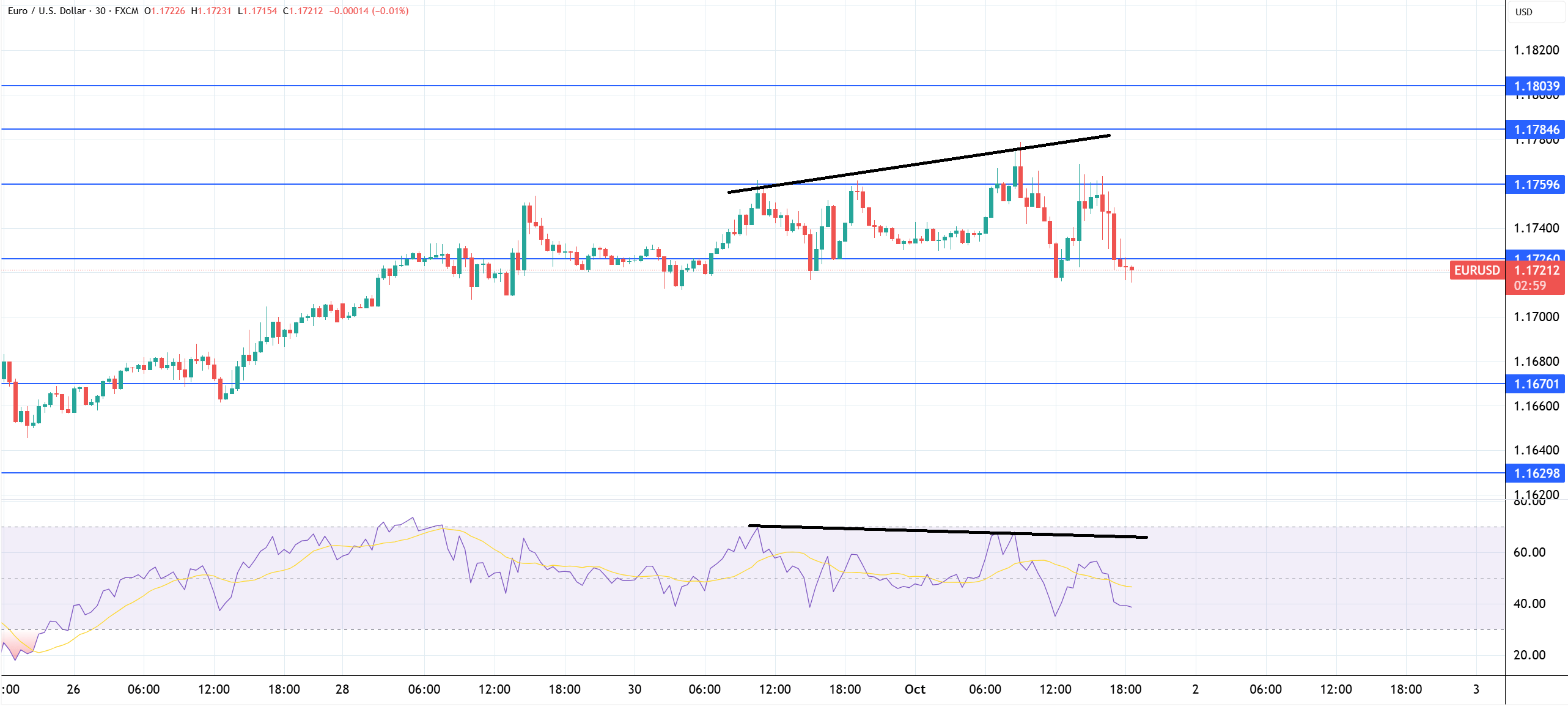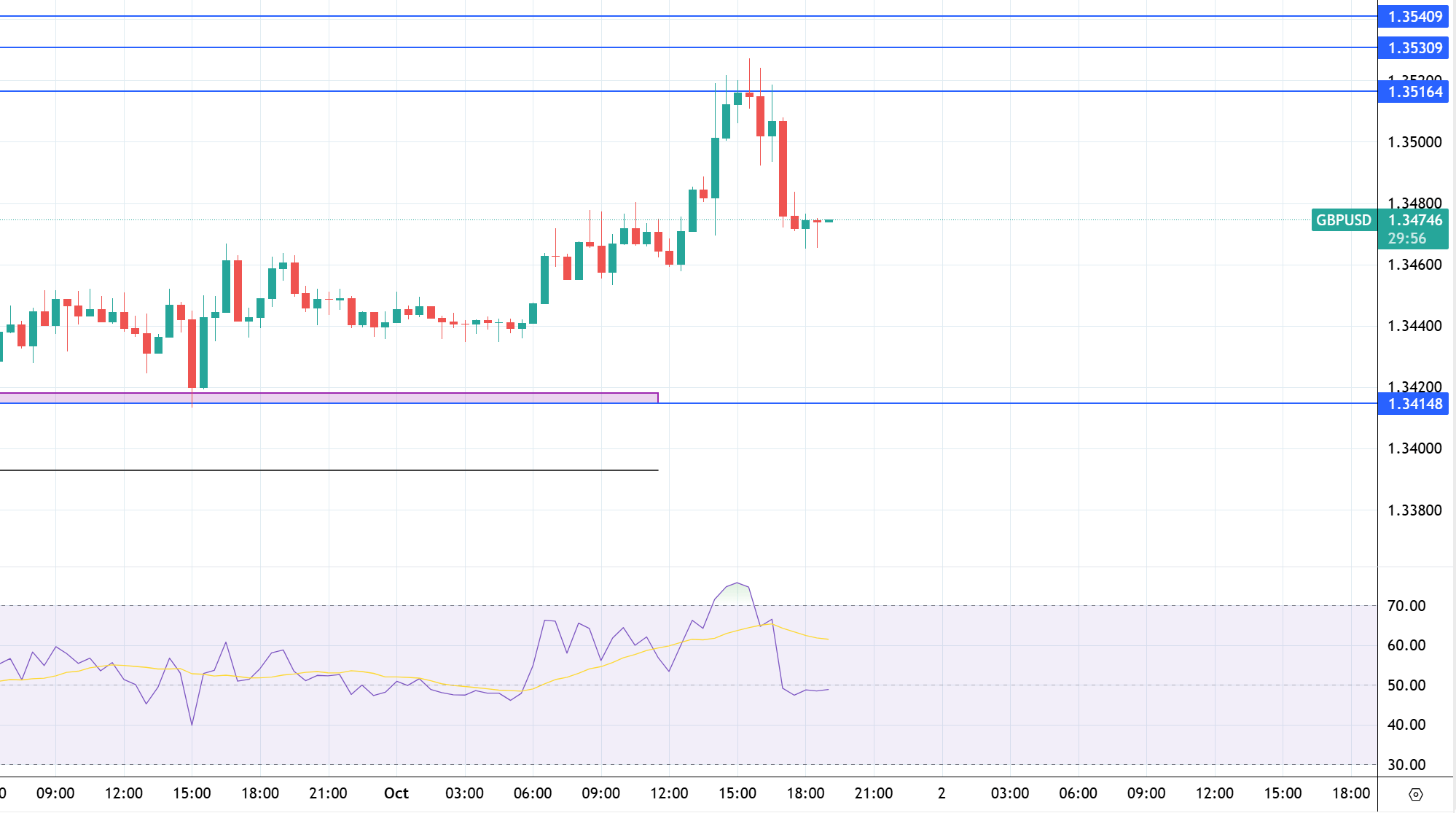The Relative Strength Index, or RSI, has long been regarded as one of the most influential tools in the field of technical analysis. At its core, RSI is designed to measure the strength and momentum of price movements. But to fully appreciate its importance in forex trading, one must first understand the environment in which traders operate. The forex market is the largest and most liquid financial market in the world, with trillions of dollars traded daily. Unlike stocks or commodities, currencies are influenced by a constantly shifting mix of economic data, central bank policies, geopolitical events, and trader psychology. In such a high-speed, interconnected environment, traders cannot rely solely on intuition or guesswork. They require structured methods to evaluate whether a market is strong, weak, overextended, or ready for a reversal. RSI provides exactly that framework.
Originally introduced by J. Welles Wilder Jr. in 1978, RSI quickly became a staple in trading platforms and textbooks. Its appeal lies in its simplicity: a single line oscillating between 0 and 100. Yet behind this simple display is a powerful way of quantifying the balance between buying and selling pressure. Traders can glance at RSI and immediately understand whether momentum is accelerating or fading. This is critical in forex, where small changes in momentum often precede larger directional moves.
Beyond its visual simplicity, RSI offers traders something equally valuable: consistency. Markets are emotional, but RSI translates these emotions into numbers and ranges. Instead of asking, “Does this rally look exhausted?” or “Is this selloff overdone?”, traders can consult RSI readings. While the indicator is not infallible, it provides an objective reference point that helps bring discipline to decision-making. In this way, RSI acts not only as a mathematical tool but also as a psychological anchor.
What is the Relative Strength Index (RSI)?
The RSI is a momentum oscillator that measures the speed and magnitude of price changes. It ranges from 0 to 100 and oscillates around these extremes, allowing traders to quickly assess whether a currency pair is potentially overvalued or undervalued. Traditionally, a reading above 70 suggests overbought conditions—where the price may be due for a correction—while a reading below 30 indicates oversold conditions—where a rebound may be likely. However, RSI is more than just a signal for reversals; it is also a tool for understanding the underlying momentum of the market.
The Relative Strength Index is classified as a momentum oscillator, meaning it measures the speed and magnitude of price movements rather than the price itself. It is plotted on a scale from 0 to 100, and it oscillates between these extremes as markets fluctuate. But to truly understand RSI, one needs to see it as a reflection of market psychology. When traders push prices aggressively higher, the RSI rises, reflecting strong bullish momentum. Conversely, when selling dominates and prices decline sharply, RSI falls, reflecting bearish momentum.
Traditionally, readings above 70 are considered “overbought,” suggesting that the market may have risen too quickly and could be vulnerable to a pullback. Readings below 30 are labeled “oversold,” signaling that selling pressure may have gone too far and a rebound might be near. These thresholds, however, should not be taken as rigid buy-or-sell signals. Markets can remain overbought or oversold for extended periods, especially in strong trends. For example, during a persistent uptrend in EUR/USD driven by central bank policy, RSI might hover above 70 for weeks without triggering a meaningful reversal. This is why experienced traders treat these levels as alerts rather than absolute rules.

EUR / USD 30-min chart with RSI and marked bearish divergence, Source: TradingView
Another important aspect of RSI is its ability to highlight divergences. A divergence occurs when price and RSI move in opposite directions. For instance, if GBP/USD makes new highs but RSI fails to do so, it suggests that bullish momentum is weakening. This kind of signal can often precede a trend reversal or at least a significant correction. Similarly, if price forms new lows while RSI makes higher lows, it suggests that bearish momentum is fading and a reversal may be on the horizon. Divergences are particularly valued because they provide insights that price action alone may not reveal.
Ultimately, RSI should not be seen as a standalone predictor of future prices, but as a lens through which traders can interpret the strength and sustainability of market moves. It works best when combined with other tools, such as moving averages, support and resistance zones, or candlestick analysis, creating a more holistic view of the market.
How is RSI Calculated?
The RSI is calculated using the average gains and losses over a specified period, typically 14 periods. The formula is as follows:
RSI = 100 - (100 / (1 + RS))
Where RS is the average gain over the period divided by the average loss over the same period, while traders rarely perform this calculation manually, understanding the logic behind it helps to appreciate why RSI is such a powerful measure of momentum. Because it focuses on relative gains and losses, RSI adapts to different market conditions and timeframes.
Key Functions of RSI
- Identify Overbought and Oversold Conditions: RSI highlights when the price may be stretched too far in one direction.
- Confirm Trends: RSI readings aligned with the trend can validate whether momentum supports continuation.
- Divergence Signals: Discrepancies between price action and the RSI can signal potential reversals.
- Support and Resistance Analysis: RSI levels can act like hidden zones of supply and demand.
- Multi-Timeframe Insights: Traders can utilize the RSI across both short and long timeframes for confirmation.
Common RSI Strategies
While understanding RSI’s mechanics is important, its real value lies in how traders apply it in practice. There are several widely used strategies, each with its own context and purpose. Simply memorizing that “70 means overbought” or “30 means oversold” is not enough. Traders must know when to trust the signals, when to ignore them, and how to combine them with broader market analysis.
Overbought and Oversold Trading
The classic strategy is to trade RSI reversals. When RSI climbs above 70, traders interpret the market as overbought and prepare for a potential decline. Conversely, when RSI dips below 30, it suggests oversold conditions, and traders may look for a rebound. However, the context is crucial. In a strong trend, the RSI can remain in these zones for an extended period. For example, during a major USD rally driven by interest rate hikes, RSI may remain above 70 for weeks, and selling too early could result in significant losses. Thus, the successful application of this strategy often requires confirmation from price action, such as a reversal candlestick pattern or a break of a support/resistance level.

GBP/USD 30-min chart with a pullback after RSI went into overbought territory, Source: TradingView
RSI Divergence
Perhaps the most powerful RSI strategy involves spotting divergences between price and momentum. Imagine EUR/USD making higher highs while RSI forms lower highs. This negative divergence suggests that although the market is still climbing, the underlying momentum is weakening, raising the probability of a reversal. Conversely, a positive divergence occurs when the price makes new lows but the RSI makes higher lows, often signaling the exhaustion of a bearish move. Traders who master the identification of divergences gain an early warning system that helps them prepare for major turning points.
RSI and Trend Confirmation
Instead of treating RSI as a reversal tool, many traders use it to confirm ongoing trends. For example, during an uptrend, traders look for RSI to remain above 40 or 50, which indicates that bullish momentum is intact. Similarly, in a downtrend, RSI staying below 50 reinforces the bearish outlook. This approach avoids the common mistake of counter-trend trading and instead utilizes the RSI as a momentum filter, aligning entries with the prevailing market direction.
Combining RSI with Moving Averages
Another common strategy is to blend RSI with moving averages. For instance, a trader might only take RSI oversold signals if the price is trading above the 200-day moving average, ensuring that the trade is aligned with the long-term trend. This combination balances the strengths of both indicators—RSI’s momentum insights and moving averages’ trend direction—producing more reliable setups.
RSI for Different Timeframes
Short-term traders often reduce RSI to 7 or 9 periods to capture faster signals, while swing traders might use 21 or more to smooth out volatility. Multi-timeframe analysis is particularly effective: if RSI shows oversold conditions on the hourly chart while the daily chart remains bullish, the alignment increases confidence in a potential bounce.
By applying these strategies thoughtfully, traders can fully harness the potential of the RSI. What matters is not simply reading the indicator, but integrating it into a broader framework that encompasses risk management, position sizing, and an understanding of market fundamentals.
Advantages and Limitations
| Advantages | Limitations |
|---|---|
| Easy to interpret with clear levels | Prone to false signals in trending markets |
| Works on multiple timeframes | Can remain overbought/oversold for long periods |
| Highlights hidden divergences | Best used with confirmation from other tools |
| Adapts to various strategies | Lagging by nature, as it uses past data |
Advanced Uses of RSI
While the Relative Strength Index is often introduced as a simple overbought and oversold tool, its versatility extends far beyond the basic 70/30 levels. Professional traders and institutional investors have developed advanced methods to integrate RSI into more sophisticated strategies. These applications demonstrate that RSI is not just for beginners but remains relevant in complex, high-level trading environments.
One advanced approach is the customization of RSI periods. The default 14-period setting is widely used; however, traders specializing in short-term strategies often reduce this number to 7 or 9 periods. This makes RSI more responsive, allowing scalpers and intraday traders to capture smaller market swings. On the other hand, swing and position traders may extend RSI to 21 or even 30 periods, which smooths the readings and filters out noise. By adjusting the period length, traders essentially adapt RSI to the volatility and rhythm of the specific market they are analyzing.
Another sophisticated application is the concept of RSI range shifts. Instead of treating 70 and 30 as fixed overbought and oversold thresholds, traders observe how RSI behaves during strong trends. In bullish markets, RSI often holds in a higher range—say between 40 and 80—without dropping below 30. In bearish markets, it may remain between 20 and 60. Recognizing these shifts helps traders avoid false signals. For example, suppose RSI repeatedly finds support around 40 during an uptrend. In that case, this becomes a signal that the market remains strong, and pullbacks to that level may represent buying opportunities rather than reasons to exit.
Institutional traders also make use of RSI in combination with volatility indicators. For instance, pairing RSI with the Average True Range (ATR) allows traders to filter signals by volatility. A divergence in RSI during low volatility may be less meaningful than one that occurs during high volatility. This layered analysis ensures that signals are weighted according to market conditions, reducing the likelihood of acting on weak setups.
In algorithmic and quantitative trading, RSI is often embedded within multi-factor models. Rather than using RSI alone, quants may include it as one of many variables in statistical or machine learning systems. For example, a trading algorithm might consider RSI alongside moving averages, volume data, and macroeconomic factors. In this context, RSI serves as a momentum filter, confirming whether other signals are supported by genuine strength or weakness in price action.
Conclusion
The Relative Strength Index is not just a basic indicator for spotting overbought or oversold conditions; it is a versatile tool for understanding market momentum, identifying divergences, and confirming trends. When used responsibly and in combination with other forms of analysis, RSI can significantly improve decision-making in forex trading. Traders who rely solely on RSI without context risk falling into common traps, such as selling too early in strong uptrends or buying too soon in powerful downtrends. However, when applied thoughtfully, RSI helps transform raw price action into actionable insights. For both beginners and professionals, RSI remains one of the essential instruments for navigating the fast-paced world of forex trading.
The Relative Strength Index has earned its place as one of the most trusted and widely used indicators in forex trading. Its longevity is not due to chance but to its ability to distill complex market dynamics into a simple, actionable framework. A single line oscillating between 0 and 100 may appear elementary, but in reality, it captures the constant tug-of-war between buyers and sellers, optimism and fear, momentum and exhaustion.
Yet, RSI is not a magic formula. It has clear strengths and equally clear limitations. Used in isolation, it can mislead traders into premature entries or exits, particularly in strong trends where momentum remains extreme for extended periods. The most successful traders understand that RSI is not about predicting exact tops and bottoms but about providing context. It tells us when conditions are stretched, when momentum is fading, and when it may be wise to proceed with caution.
For beginners, RSI offers a practical entry point into technical analysis. It is easy to understand, visually intuitive, and applicable to virtually any market or timeframe. For professionals, it remains valuable as part of larger models, particularly when combined with volatility filters, moving averages, or multi-indicator systems. Hedge funds and institutional traders may not rely on RSI alone, but they continue to use it as a core building block within more sophisticated frameworks.
Perhaps the greatest lesson RSI teaches is the importance of balance. Just as the indicator balances gains against losses, traders must balance discipline against flexibility, patience against decisiveness. RSI encourages a systematic approach, reminding traders to look beyond the noise and focus on the underlying momentum. It reinforces the idea that successful trading is not about predicting the future with perfect accuracy, but about aligning with probabilities, managing risk, and maintaining consistency.
RSI is far more than a line on a chart. It reflects market psychology, serves as a momentum guide, and provides a tool for discipline. When used wisely, it empowers traders to see beyond short-term volatility and to navigate the forex market with greater confidence and clarity. Whether you are just starting your trading journey or refining advanced strategies, mastering RSI is a step toward mastering the art of technical analysis itself.
Frequently Asked Questions
What is the ideal RSI setting?
The default setting is 14 periods, but traders can adjust it. Shorter settings (7 or 9) provide faster signals, while longer ones (21 or more) offer smoother, more reliable readings.
Is RSI better on shorter or longer timeframes?
It depends on your strategy. Scalpers and intraday traders often prefer shorter timeframes with adjusted RSI settings, while swing and position traders use daily or weekly charts.
Can RSI be used in trending markets?
Yes, but with caution. In strong trends, RSI can stay in overbought or oversold zones for extended periods. Traders should use RSI in combination with trend filters or moving averages.
Do professionals still use RSI?
Absolutely. Institutional traders often include RSI in broader models. While they may not rely on it alone, its ability to highlight momentum shifts and divergences makes it a valuable component of professional analysis.
Note: Any opinions expressed in this article are not to be considered investment advice and are solely those of the authors. Singapore Forex Club is not responsible for any financial decisions based on this article's contents. Readers may use this data for information and educational purposes only.







